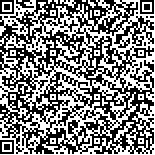下载中心
优秀审稿专家
优秀论文
相关链接
摘要

传统变化检测手段进行水稻遥感识别受"云污染"和影像间配准误差导致的变化检测误差累积及"椒盐"现象的影响,水稻遥感识别精度低。本文提出时空融合模型(Temporal-Spatial-Fusion Model,TSFM)进行水稻遥感识别,旨在综合像元在时间、空间维度上的信息定义像元的水稻时空归属度,根据时空归属度划分阈值提取水稻。实验结果表明:在不同窗口尺度下,TSFM在整体和"云污染"区域对水稻提取均达到了较高精度。当窗口尺度为3×3时,水稻提取的用户精度、制图精度和总体精度分别达到93.4%、83.5%和87.9%。在不同窗口尺度下水稻提取的用户精度、制图精度、总体精度均高于分类后比较PCC(Post-Classification Comparison)和多数投票法(Majority Voting,MV);在"云污染"区域,水稻识别总体精度均在92.0%以上,水稻制图精度比PCC、MV分别至少提高了14.0%、7.6%。有效地解决了传统变化检测作物遥感识别存在的误差累积问题,在一定程度上避免了"云污染"和"椒盐"现象对识别结果的影响。另外,初步探讨了TSFM水稻提取精度与景观特征关系,发现在景观规整区域适宜采用较小的窗口,在破碎区域适宜采用较大的窗口。该方法的成功实施,为大范围开展秋粮作物遥感识别,消除"云"影响进行了前期实验探讨。
The change detection method is extensively used in the extraction of paddy rice using remote sensing images. However, the precision of paddy rice classification is reduced by "cloud contamination" and "salt and pepper." "Cloud contamination" occurs frequently in paddy rice planting areas during the autumn season. The images obtained by using the change detection method to extract paddy information lead to missing spectral information and constraints in using change detection. "Salt and pepper" occurs by misregistration, and a variety of errors are encountered in the classification, which yields false information and results in the accumulation of deviation during extraction. However, these two crucial issues have a detrimental effect on the ability to extract paddy accurately, which must be solved to increase the accuracy of extraction. In this study, an innovative model called temporal-spatial-fusion model(TSFM) is proposed to reduce the effect of these noises.
In this model, we built a temporal-spatial-belonging degree algorithm. First, the TSFM calculated the attribution probability of the target pixel by using the spectral information of neighborhood pixels in spatial dimensions. We searched the classification of each thematic map in a critical period of paddy growing with a window and calculated the belonging degree in spatial dimensions. Second, we computed the mean of the belonging degree of pixels in the same geospatial location by using the time series of remote sensing images in time dimensions, which is the temporal-spatial-belonging degree of the pixel. Third, the paddy rice was extracted by defining the threshold derived by using the change magnitude threshold determination method.
Post-classification comparison(PCC) and majority voting(MV) were introduced to map the paddy rice and to validate the proposed algorithm. We assessed the precision of the result of paddy rice in the entire study area and the "cloud contamination" area with confusion matrix method. The degree of landscape fragmentation was used to assess the effect of the mixture of spectral information of crop, which should be analyzed. Thus, two districts were selected as study areas with different degrees of landscape fragmentation based on a visual appraisal of the study area. The accuracy was compared, and the applicability and difference using TSFM were analyzed in these two regions.
Experimental results show that the precision of the user, accuracy of the producer, and overall accuracy of the TSFM with 3×3 window size are 93.4%, 83.5%, and 87.9%, respectively. Compared with the traditional change detection method of PCC, these precisions are higher than 2.3%, 12.3%, and 9.3%. When different window sizes are used to identify the paddy rice, these precisions are higher than that of the PCC results. The overall accuracy is better than 92.0%, and the omission errors of the PCC and MV are reduced by 14.0% and 7.6%, respectively, in the area of cloud contamination. The results of classification using TSFM with different window sizes in the regular and fragmented regions varied, providing a foundation for the use of TSFM in different landscapes.
Experimental results showed that the TSFM effectively solved the problem of errors from "cloud contamination" and "salt and pepper."The TSFM provides a new and potentially effective method for paddy rice mapping based on change detection. In the future, we will attempt to apply this method to a large area in China with fragmented and complex landscape.

